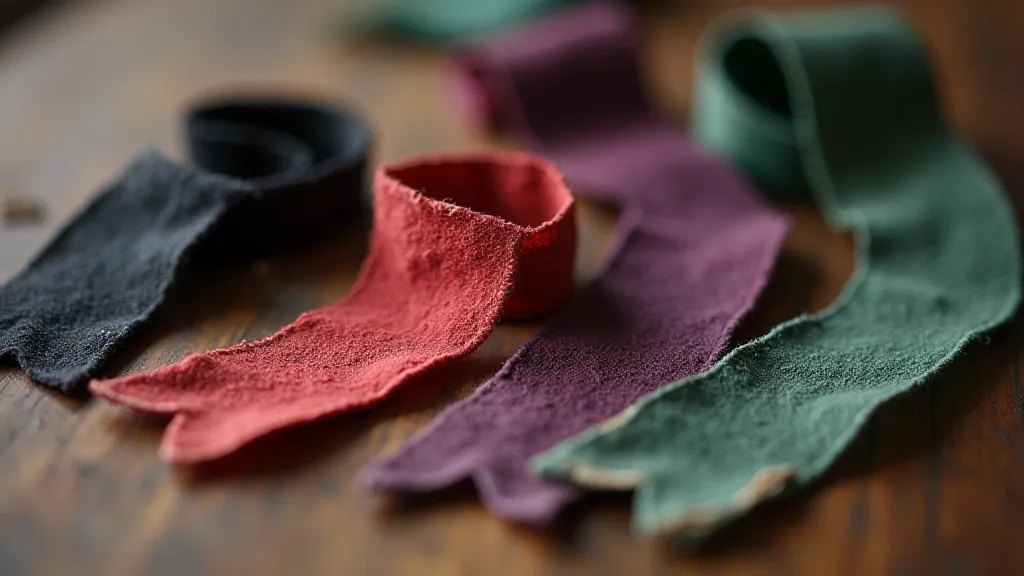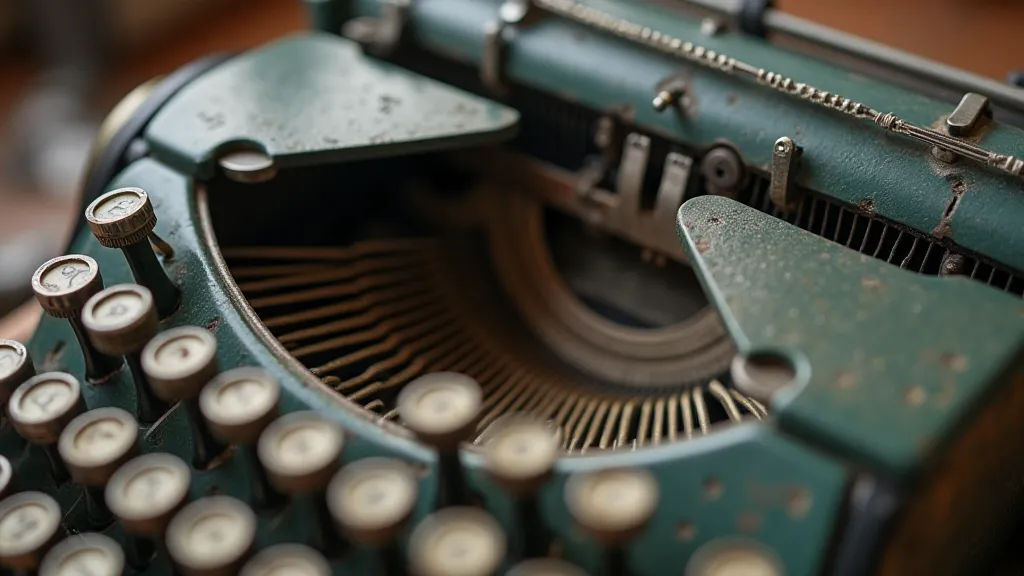The Spectrum's Whisper: Analyzing Trace Elements in Antique Ribbon Inks
There’s a quiet romance tied to the objects of our past, isn’t there? A whisper of lives lived, stories told, and artistry painstakingly applied. When I first began collecting antique typewriter ribbons, it wasn’t about the ribbons themselves, but about the echoes they held – the letters hammered out by a young soldier writing home, the poems penned by a struggling artist, the legal documents sealing important agreements. Each faded stripe is a tangible link to a moment in time, a testament to the enduring power of communication.
But beyond the sentimentality, a profound curiosity began to stir. What *exactly* were these ribbons made of? How did the colors change over time? Were there subtle variations between manufacturers, or even between batches from the same factory? This curiosity led me down a path far beyond simple identification; it plunged me into the fascinating, and surprisingly complex, world of analyzing the chemical composition of antique typewriter ribbon inks.

A Historical Palette: From Carbon Black to Organic Dyes
To understand the chemical makeup, we need to trace the history. Early typewriter ribbons, emerging alongside the machines themselves in the mid-19th century, were largely based on readily available materials. Carbon black, a byproduct of soot production, dominated the black inks, offering a relatively inexpensive and durable pigment. The challenge, however, lay in achieving other colors. Initially, mineral dyes and natural pigments were utilized, leading to a somewhat limited palette – primarily browns, greens, and reds derived from ochre and iron oxides. These early ribbons, however, were notoriously prone to fading and bleeding.
The late 19th and early 20th centuries witnessed a revolution in dye chemistry. The rise of aniline dyes, derived from coal tar, opened up a universe of vibrant colors – deep reds, purples, blues, and even bright greens. These organic dyes offered superior colorfastness and intensity compared to their mineral predecessors. However, the chemical composition varied considerably depending on the specific dye used. For instance, a "red" ribbon from the 1890s might contain alizarin, a natural dye derived from madder root, while a ribbon from the 1920s might utilize naphthol red, a synthetic alternative. The nuances of these color changes and the story behind uncommon ribbon colors are a fascinating subject in themselves. Sometimes, the deterioration of these ribbons can even reveal fascinating details about the writing habits of their users – a concept beautifully explored in “The Silent Witness: How Ribbon Degradation Reveals Writing Habits”.
Analytical Techniques: Unlocking the Secrets Within
My quest to understand these differences wasn’t satisfied by historical accounts. I needed to *see* the composition, to quantify the elements that defined each ribbon’s unique fingerprint. This necessitated employing advanced analytical techniques, methods typically reserved for materials scientists and forensic investigators. It's a world of mass spectrometry, chromatography, and spectroscopy – tools that might seem intimidating, but which offer astonishing insights.
Raman spectroscopy, for example, allows us to identify the molecular vibrations within the ink, revealing the presence of specific dyes and pigments without destructive sampling. Gas chromatography-mass spectrometry (GC-MS) separates the volatile components of the ink and identifies them by their mass-to-charge ratio. X-ray fluorescence (XRF) allows for the detection of elemental composition – not just the dyes themselves, but trace elements that might be impurities in the raw materials or residues from the manufacturing process.
The process isn’t without its challenges. Ribbon inks are complex mixtures, often containing multiple dyes and additives. Moreover, age and degradation significantly alter the chemical landscape. Light exposure, oxidation, and hydrolysis all contribute to the breakdown of the original compounds, introducing new byproducts and obscuring the initial composition. This means that even with the most sophisticated techniques, interpretation requires careful consideration of the historical context and an understanding of the likely degradation pathways.

Trace Elements: The Silent Storytellers
It’s the trace elements – those tiny, often overlooked constituents – that often hold the most intriguing clues. A ribbon from a particular factory might contain a distinctive level of zinc, a byproduct of the zinc carbonate mordant used to fix the dyes to the fabric. Another might reveal traces of lead, a common contaminant in pigments before stricter environmental regulations came into effect. These subtle variations act like fingerprints, allowing us to differentiate between manufacturers, batches, and even identify the source of the raw materials. It’s often these minute details that reveal the hidden complexities of manufacturing processes, as if the ribbon itself is whispering a fragmented account of its creation – a theme also touched upon in Echoes in the Weave: Decoding Variations in Ribbon Manufacturing Processes.
One fascinating discovery came while analyzing a collection of “Royal Purple” ribbons purported to be from the Underwood Typewriter Company. While the dominant dye was consistently identified as methyl violet, trace analysis revealed a peculiar abundance of vanadium. Further investigation revealed that a specific supplier of aniline dyes used vanadium compounds in their manufacturing process—a fact that had been entirely lost to historical records until this analysis. It was a small detail, but it connected the ribbon to a specific point in the industrial chain and provided invaluable insight into the production methods of the time. Sometimes these markings can be so subtle, they reveal markings left by the cartographer of the ribbon’s history – clues that are akin to reading a secret code woven into the fabric itself. For those interested in uncovering these hidden symbols, “The Cartographer's Mark: Deciphering Hidden Symbols on Vintage Ribbons” provides a fascinating glimpse into the subject.
Preservation and the Collector’s Eye
This analytical work isn’t just an academic exercise. It has profound implications for the preservation and restoration of antique typewriters. Understanding the chemical instability of specific dyes allows us to develop more effective storage and handling protocols. For example, knowing that certain red dyes are particularly susceptible to fading upon exposure to light encourages collectors to store their ribbons in dark, cool environments.
Furthermore, this knowledge informs the restoration process. When replacing a faded ribbon, it’s not enough to simply choose a color that *looks* right. A deeper understanding of the original chemical composition allows restorers to select a replacement ribbon that is chemically compatible, minimizing the risk of damage to the typewriter mechanism. It's about respecting the integrity of the original machine and ensuring its longevity.

The Enduring Legacy
Analyzing antique typewriter ribbons isn’t merely about identifying pigments and trace elements. It’s about connecting with the past on a deeper level, understanding the ingenuity of the people who created these seemingly simple objects, and appreciating the artistry and craftsmanship that went into their production. It's a journey that combines scientific rigor with a profound respect for history, a testament to the enduring power of the written word, and the quiet beauty of the materials that bring those words to life. The ongoing research surrounding these seemingly insignificant strips of fabric continues to reveal new insights into the manufacturing processes, writing habits, and historical context of a bygone era. Beyond the chemical composition, the ribbons themselves become artifacts, each stripe a silent testament to the ingenuity and artistry of the past.
And as I continue to unravel the chemical secrets held within each faded stripe, I’m reminded that every antique ribbon tells a story – a spectrum’s whisper waiting to be heard. The meticulous analysis required to decipher these secrets is an ongoing process, pushing the boundaries of what we know about historical materials and revealing new avenues for exploration. The continued preservation of these artifacts ensures that future generations can experience the beauty and mystery of these tangible links to the past, allowing them to hear the spectrum’s whisper for themselves.





